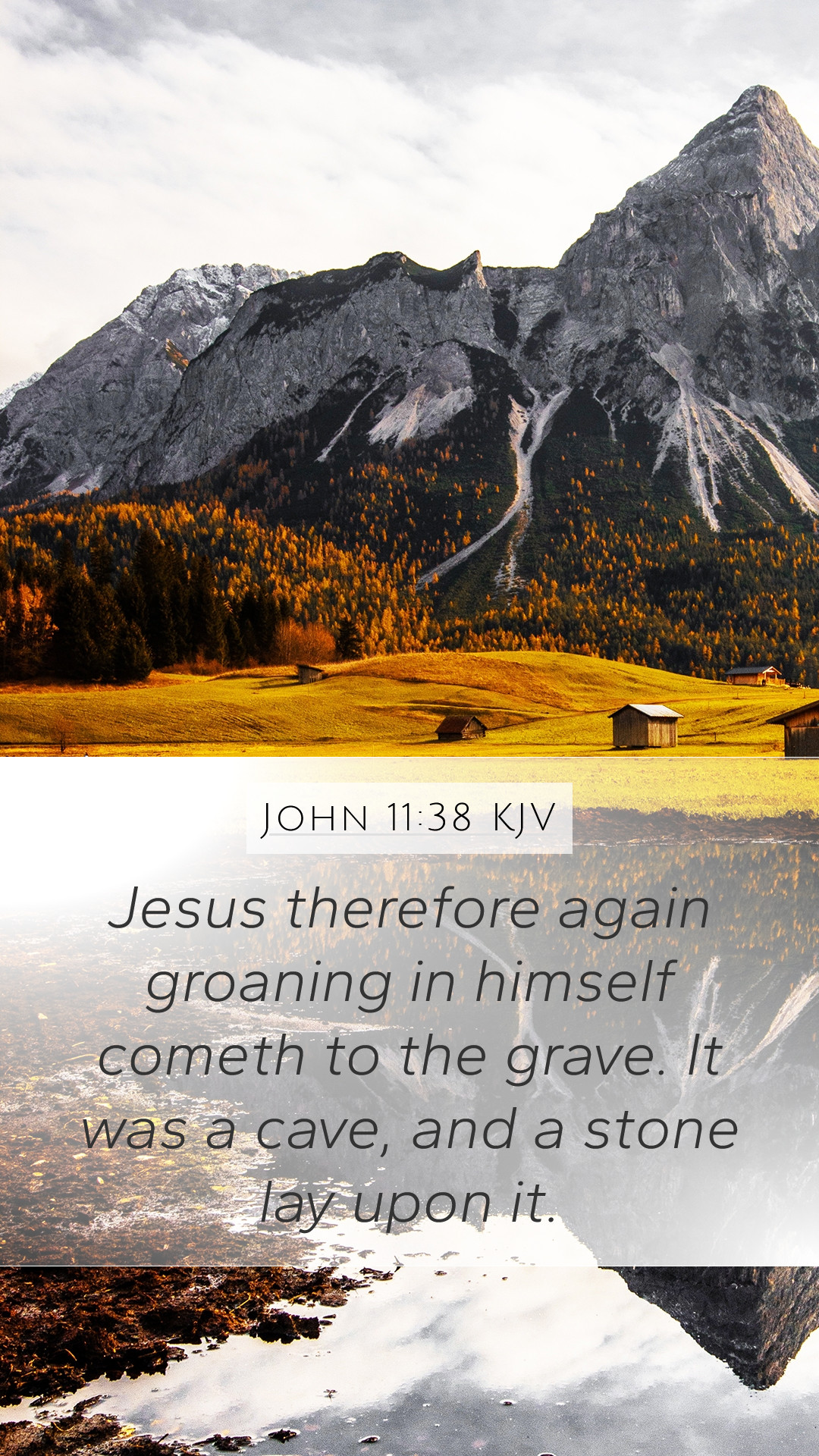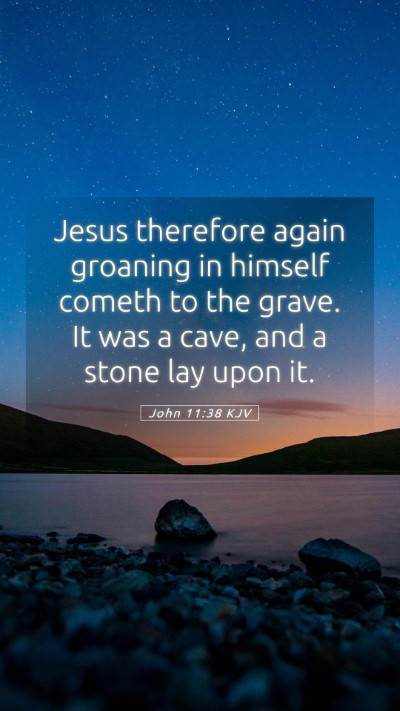Bible Verse Meaning: John 11:38
John 11:38 states: “Jesus, therefore, again groaning in himself, cometh to the grave. It was a cave, and a stone lay upon it.” This verse occurs during the account of the death and resurrection of Lazarus and highlights the deep emotional turmoil that Jesus experiences as He approaches the tomb of His friend.
Summary of Bible Verse Interpretations
-
Matthew Henry's Commentary:
Henry emphasizes the compassion of Jesus. The term "groaning" indicates His profound sorrow and empathy towards the pain of death and loss. Jesus identifies with human grief, portraying His divine nature intertwined with human emotion. His approach signifies His readiness to confront death, which He ultimately overcomes.
-
Albert Barnes' Notes:
Barnes underscores the significance of the cave as a symbol of death and the stone as a barrier. He notes that Jesus' actions are deliberate, designed to draw attention to the miraculous event about to unfold. The groans reflect not only grief but also the impending triumph over death and the grave, signifying the power of resurrection.
-
Adam Clarke's Commentary:
Clarke elaborates on the human aspect of Jesus’ emotions. The groaning is portrayed as a response to the anguish of those around Him, as well as His own distress over sin and its consequences. This multifaceted emotional state highlights the two natures of Christ – fully divine and fully human – offering deep insight into His mission on earth.
Understanding the Context
John 11:38 serves as a pivotal moment in the narrative of Jesus raising Lazarus from the dead. The context sheds light on themes of grief, hope, and divine authority over death. The passage illustrates the human condition and the need for empathy in suffering, aligning with broader Bible study insights on lamenting and mourning, which are prevalent throughout Scripture.
Key Themes and Insights
- The Compassion of Christ: Jesus’ emotional response reveals the depth of His compassion. He is not a distant deity but one who feels human pain and sorrow.
- Confronting Death: This scene foreshadows the resurrection power that Jesus embodies. It is a moment not just of grief but of imminent victory over death.
- Symbolism of the Cave and Stone: The cave represents death and separation, while the stone symbolizes the finality of death. Jesus’ coming here signifies His power to change the narrative.
Application and Significance
Understanding John 11:38 through various commentaries allows believers to apply its meanings in their lives. When confronting personal loss or pain, one can take comfort in the fact that Jesus fully understands and empathizes with human sorrow. This verse invites us to trust in divine intervention even in seemingly hopeless situations.
Furthermore, Bible study groups can use this verse to explore expressions of grief, the nature of Jesus, and the hope of resurrection. The application extends to recognizing how Jesus’ actions provide a model for how we should respond to suffering in others.
Related Bible Cross References
- Romans 12:15: "Rejoice with those who rejoice; mourn with those who mourn."
- John 14:1-3: Jesus promises comfort through belief in Him and the hope of eternal life.
- 1 Corinthians 15:55: "O death, where is your victory? O death, where is your sting?" - affirming Jesus’ victory over death.
Conclusion
In conclusion, John 11:38 encapsulates a beautiful blend of sorrow and hope, reflecting the meaning of Bible verses that call us to both empathy and faith. Through examining this passage with a focus on its emotional, spiritual, and theological implications, we gain a richer understanding of Scripture and the significance of Jesus in the face of death. Engaging in Bible study resources can further enhance one's grasp of these profound truths.


